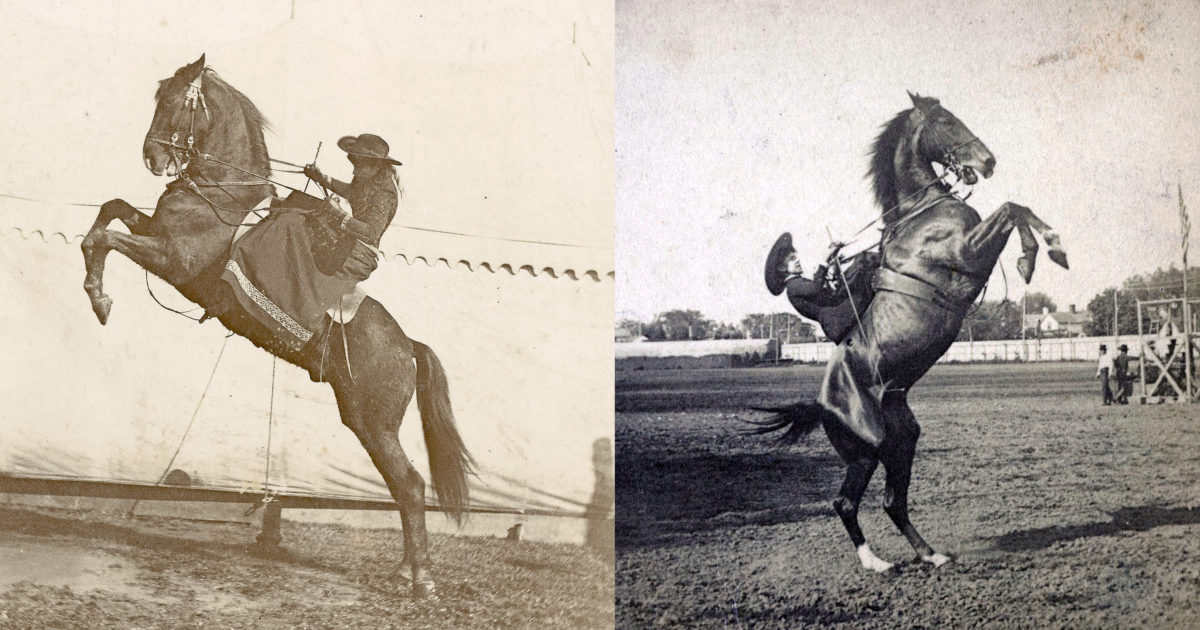Among the celebrated female performers in Buffalo Bill Cody’s touring Wild West were legendary sharpshooter Annie Oakley (left) and accomplished equestrienne Emma Lake Hickok (right), the stepdaughter of Cody’s friend Wild Bill. Both women risked their lives performing daring feats for crowds of thousands. So why add more risk by riding sidesaddle?
Sidesaddle emerged as a European tradition during the Middle Ages, as prevailing cultural norms called for a more modest and fashionable mode of riding for women in skirts. It was as much an obstacle as a fashion statement, though. The modern sidesaddle — on which a rider’s legs rest against an extended upright pommel and a second, lower pommel — dates from the 1830s. Before that women had to make do with awkward designs closer to chairs, which hindered them from looking directly forward and, consequently, properly controlling their mounts.
While the modern sidesaddle was an improvement, it still lacked the control and safety that comes with riding astride, especially on uneven terrain. For women working on the American frontier, function trumped fashion, and they often rode astride with split or hiked-up skirts. It took social expectations time to catch up, though. “The woman does not live who can throw her leg over the back of a horse without profaning the grace of femininity,” opined the Los Angeles Times in 1905.
Oakley, Hickok and the other women in Buffalo Bill’s Wild West performed for predominantly Eastern audiences, who, while amenable to simulated war and death-defying stunts, would have been scandalized by a woman riding astride like a man, hence their reliance on the sidesaddle. The resulting combination of modest dress and extreme riding certainly thrilled onlookers, and Hickok became known as the “Queen of the Sidesaddle.”
The fight to ride astride came around the same time as the fight for suffrage, and adventuresome equestriennes like “Two Gun” Nan Aspinwall and Alberta Claire made strides toward the former by crossing the country astride horses in 1911 and 1912, respectively. Today, of course, any woman on a ranch or at a rodeo would be welcome and expected to wear jeans and ride astride like men. But there remains a select group of equestriennes who celebrate the old-fashioned elegance of the sidesaddle.
historynet magazines
Our 9 best-selling history titles feature in-depth storytelling and iconic imagery to engage and inform on the people, the wars, and the events that shaped America and the world.


